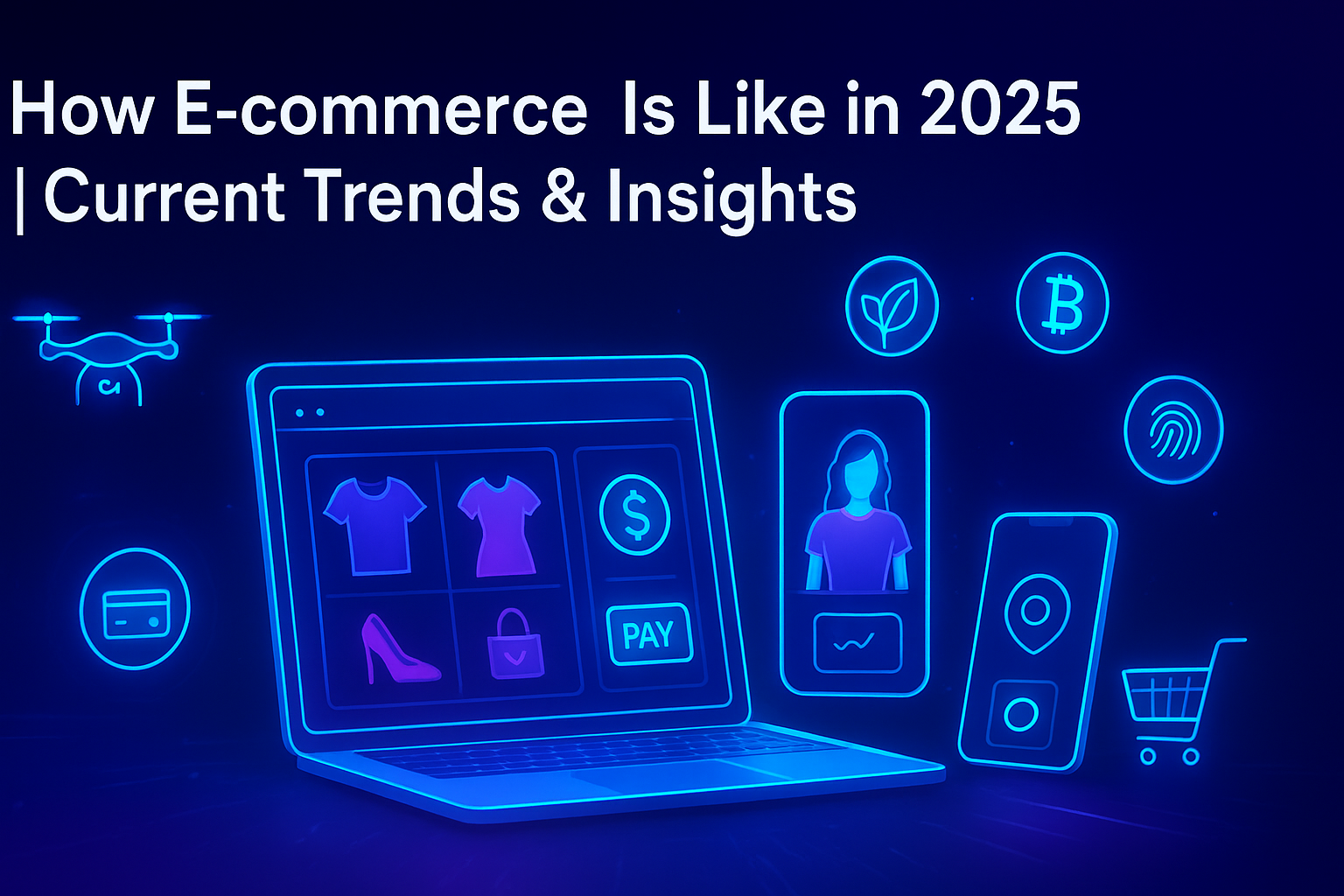How E-commerce Is Like In 2025 | Current Trends & Insights
The e-commerce landscape in 2025 is being reshaped by rapid technological advances, changing customer expectations, and new operational realities. This article gives a practical, vendor-neutral snapshot of the forces driving that change — from AI-powered personalization and faster fulfillment to sustainability, privacy-first marketing, and platform choices. Drawing on industry research and Tekversify’s hands-on experience of Ecommerce website development and building high-volume stores, you’ll get clear trends, platform guidance, and an actionable checklist to prepare your store for the next wave of growth.
Why this matters (short)
Technology is changing retail faster than ever. Consumers expect frictionless shopping, rapid fulfillment, and personalized experiences across devices. Companies that adopt AI, automation, and sustainable logistics will gain a clear competitive advantage.What to expect for e-commerce operations in 2025
According to McKinsey & Company, in 2025, the speed and cost-efficiency of e-commerce operations will increasingly hinge on innovations across the supply chain. Integrating AI, automation, and smart logistics — including drone trials and autonomous last-mile solutions — will reduce delivery times, cut costs, and improve inventory accuracy. These operational improvements aren’t optional: they are central to meeting modern customer expectations.Market outlook and growth signals
Online retail continues to capture a larger share of total retail spending. Analysts forecast that global e-commerce will represent a significant and growing slice of retail value over the coming years, with multi-trillion dollar market size projections by the late 2020s. These projections underline why digital transformation, data strategies, and optimized customer journeys are essential for brands that want to scale.10 Key E-commerce Trends for 2025 (and how to act on them)
-
AI-Driven Personalization (must-have)
Use machine learning to deliver product recommendations, dynamic pricing, and personalized content in real time. Prioritize models that reduce bias and are auditable to maintain trust. When implemented correctly, personalization produces measurable lifts in conversion rates and customer lifetime value. -
Augmented Reality (AR) Shopping
Let customers visualize products (furniture, apparel, cosmetics) in real settings. AR reduces returns and increases purchase confidence. Simple AR features often shorten decision time and boost average order value by improving product clarity. -
Voice & Conversational Commerce
Optimize product pages and FAQs for natural language queries. Implement conversational assistants for product discovery and support. Conversational flows also lower support costs by resolving routine questions without human agents. -
Live-Stream & Social Commerce
Combine entertainment and shopping — live demos, shoppable streams, and creator partnerships convert engagement into instant sales. These formats build urgency and authenticity, often increasing immediate conversion during events. -
Subscription & Replenishment Models
Offer curated subscriptions and auto-replenish options to increase lifetime value and predictable revenue. Subscriptions smooth demand forecasting and strengthen customer retention when paired with personalized offers. -
Digital Payments, Crypto & Secure Transactions
Support diverse payment options (digital wallets, one-click checkout, biometric auth). For specific markets, consider accepting crypto where it improves conversion or cross-border settlement. Frictionless, secure checkout is one of the single biggest drivers of cart completion. -
Sustainability & Ethical Sourcing
Consumers reward brands that minimize packaging waste, reduce carbon footprints, and show supply-chain transparency. Communicating verified sustainability efforts can become a unique selling point and justify premium pricing. -
Hyper-Personalized Marketing
Shift from batch email blasts to real-time, AI-driven messaging that adapts by channel, behavior, and lifecycle stage. First-party data strategies will replace outdated third-party tracking. This approach increases relevance and improves engagement while respecting privacy. -
Faster, Smarter Fulfillment
Automated warehouses, predictive stocking, route optimization, and pilot drone/autonomous deliveries will decrease delivery windows and lower costs. Faster fulfillment directly correlates with repeat purchases and customer satisfaction metrics. -
Security & Trust (including blockchain use cases)
Strengthen transaction security, fraud detection, and data governance. Use transparent privacy practices to earn customer trust. Visible security signals and clear policies reduce churn and increase repeat business.
- Shopify — Ideal for merchants who need fast deployment, a strong ecosystem, and growing AI tooling.
- WooCommerce — Best when you need full control and deep WordPress integration for content-centric commerce.
- Magento (Adobe Commerce) — Suited for complex enterprise setups that require large catalogs, advanced integrations, and high scalability.
Practical checklist: Ready your store for 2025
- Audit your customer data flows and implement a first-party data strategy.
- Add AI personalization modules and measure lift on CVR and AOV.
- Optimize product pages for voice and visual search (structured data + FAQs).
- Test faster fulfillment options (local hubs, micro-fulfillment, carrier partnerships).
- Publish transparent sustainability and privacy policies.
- Implement strong fraud prevention and multi-factor authentication for checkout.

